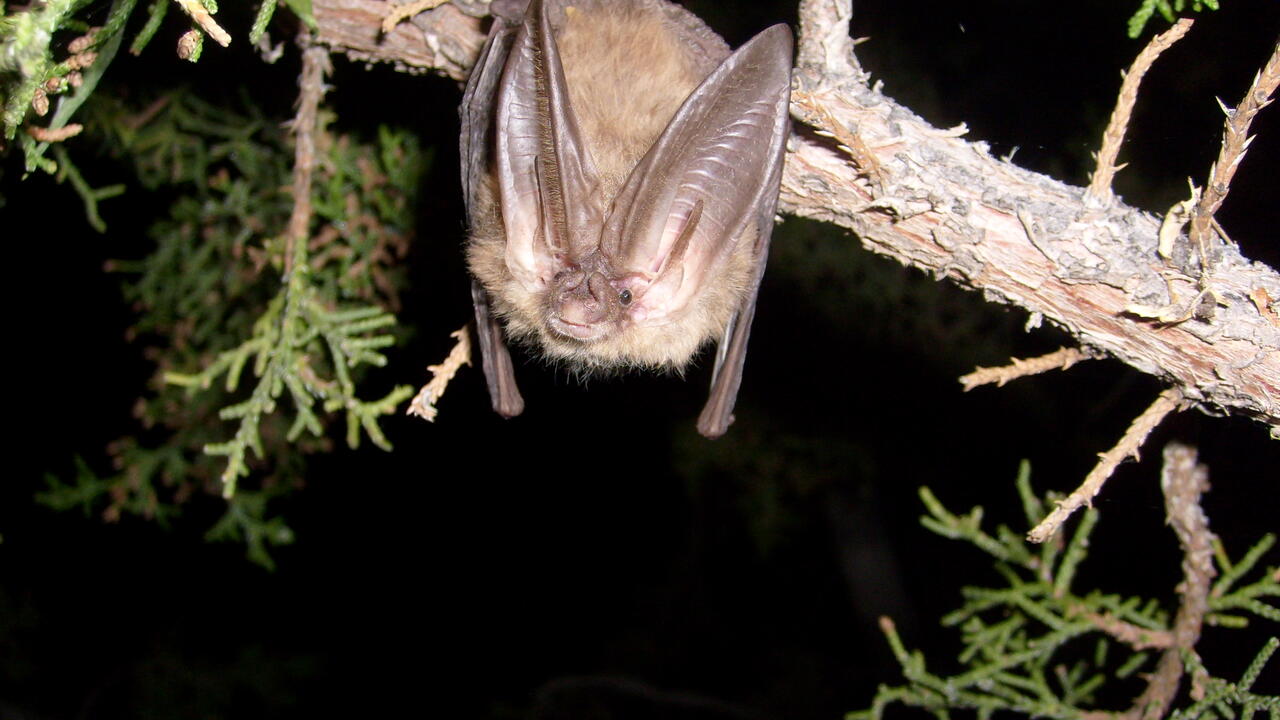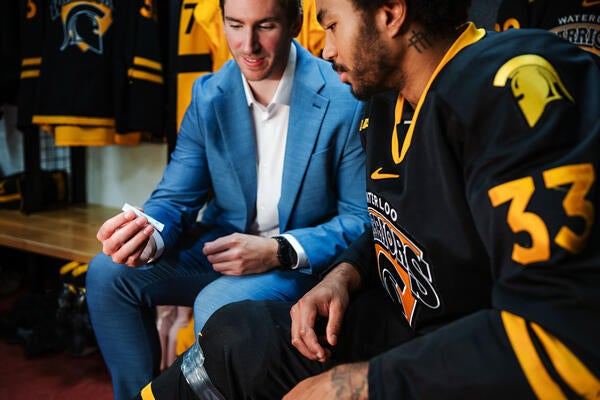
High water loss during hibernation may leave bats vulnerable to population declines
Understanding bat’s hibernation patterns can inform prevention and conservation efforts as white-nose syndrome spreads in North America

Understanding bat’s hibernation patterns can inform prevention and conservation efforts as white-nose syndrome spreads in North America
By Media RelationsWhen it comes to hibernation, conserving resources is key for an animal’s survival. For bats of Western North America, water may be the key to assessing a bat species’ ability to thrive during hibernation.
New research that comes as part of a larger project to understand the potential impact of white-nose syndrome in the West found that bats are adept at finding similar hibernation conditions across their large geographic ranges, despite a variety of climates in these areas.
“Understanding the differences, hibernation patterns and physiology of bats in the West is key to predicting the impact that climate change and diseases such as white-nose syndrome will have on these bats,” said Liam McGuire, a biology professor at the University of Waterloo who led the bat hibernation patterns and physiology portion of this project.
“White-nose syndrome has devastated bat populations in Eastern North America in recent years but many regions of the West remain unaffected. Understanding bat hibernation patterns can inform prevention and conservation efforts as this disease spreads west.”
Some bat species have very large ranges and may be found across much of the continent, so the team first collected measurements on two different species of bats throughout their ranges—Northwest Territories to Montana and British Columbia to Colorado. Despite vastly different climates found throughout these ranges, within the same species, hibernation physiology did not differ among populations, likely because bats are able to find similar roosting conditions throughout the range.
The researchers then expanded their research to compare the hibernation patterns of 13 different species of bats. Among the diverse list of species included in the study, there was variation in the temperatures preferred by hibernating bats, but at their preferred temperature all were able to reduce their rate of energy expenditure similarly in hibernation. However, differences appeared when comparing the amount of water that different species lost as they hibernated.
“Water is a crucial resource for survival. Bats that lose high amounts of water through their skin or in their breath may need to arouse more frequently to drink water, impacting their hibernation cycles and requiring more energy overall.”
This water loss may be the key to understanding the impact of white-nose syndrome in bats. Although the disease had not reached the western bats at the time of the study, McGuire’s team observed that, among bats that live across the entire continent, the bat species with high water loss are the ones most heavily impacted by white-nose syndrome along the East Coast.
The papers, “Interspecific variation in evaporative water loss and temperature response, but not metabolic rate, among hibernating bats” and “Similar hibernation physiology in bats across broad geographic ranges” were recently published in Nature’s Scientific Reports and the Journal of Comparative Physiology B, respectively. This project is a collaboration between the University of Waterloo, the Wildlife Conservation Society, the Wildlife Conservation Society Canada, Texas Tech University, University of Winnipeg, and Montana State University.
Banner image: Townsend's big-eared bat courtesy of professor McGuire.

Read more
New medical device removes the guesswork from concussion screening in contact sports using only saliva

Read more
New platform helps pharmacists prescribe with confidence, streamline administrative tasks and improve patient outcomes

Read more
And a new model for how quantum research is shared — opening doors for the next generation of scientists and entrepreneurs
The University of Waterloo acknowledges that much of our work takes place on the traditional territory of the Neutral, Anishinaabeg, and Haudenosaunee peoples. Our main campus is situated on the Haldimand Tract, the land granted to the Six Nations that includes six miles on each side of the Grand River. Our active work toward reconciliation takes place across our campuses through research, learning, teaching, and community building, and is co-ordinated within the Office of Indigenous Relations.